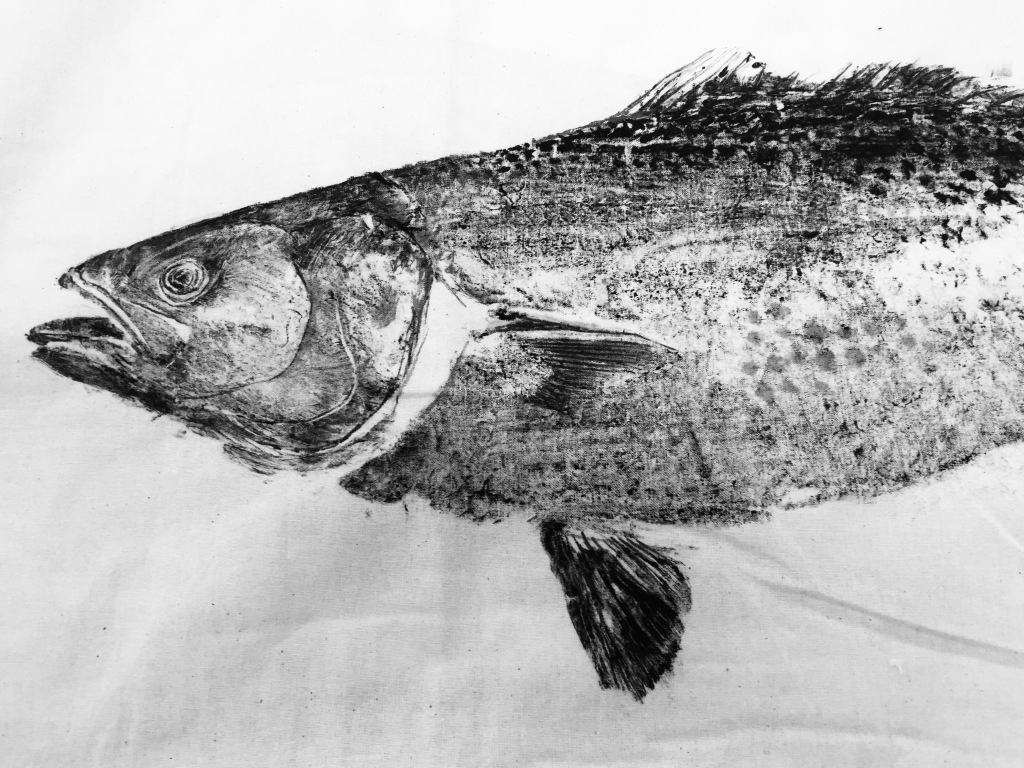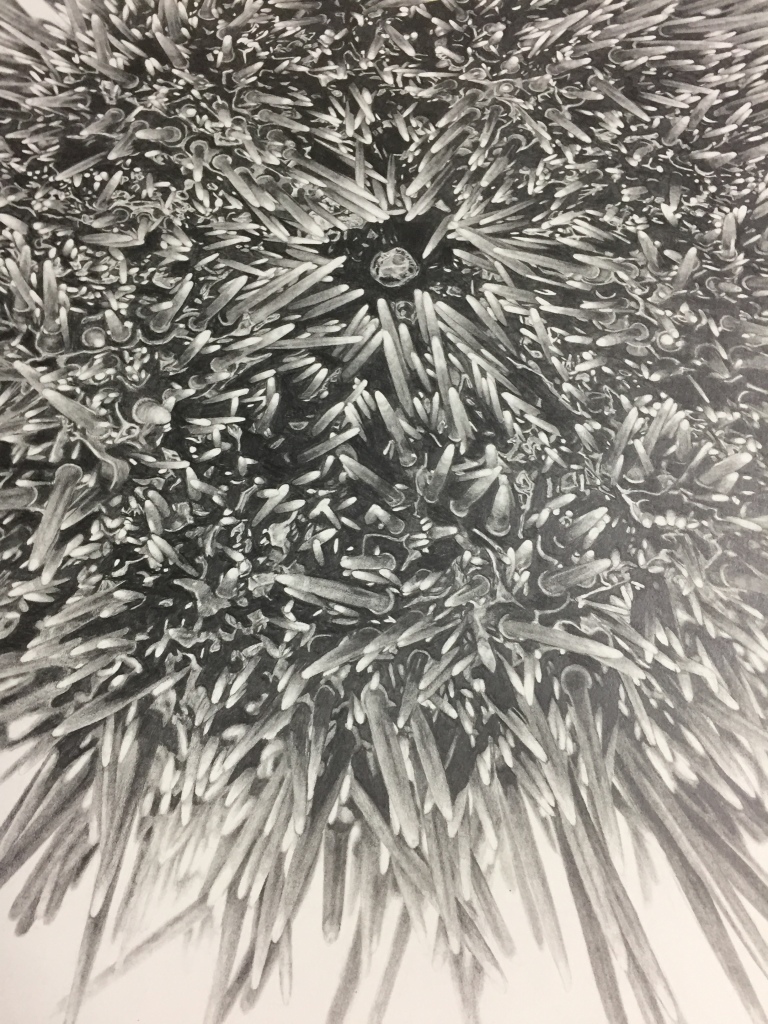Gyotaku is a printmaking technique originating in 19th Century Japan as a method used by fishermen to create an impression of their catch. Often right there in the boat before reaching port, they would apply ink to the fish and transfer the image onto rice paper which would then be displayed at market so customers could clearly see the variety, size and shape of each fish available for purchase. Gyotaku has since been developed into a fine art and adopted by artists that has spread around the world. Tim Li first came across the technique a few years ago and although he was initially disheartened by the poor outcomes of his first attempts at achieving an accurate depiction of the fish, he persevered, experimenting with different substrates and applications of ink. Over time he started to appreciate the mark making that can be achieved, and the honesty of the process which captures all the imperfections, the irregular scale patterns, blemishes and marks that are unique to that one living creature.
Li has been fascinated by the anatomy of fish since he was a child when he would go trout fishing with his family in Taupo, where he grew up, and later on regular fishing trips to Te Kaha. Photographing and drawing these underwater species was a way to study every tiny detail of each one. He remembers being mesmerised by the diversity of fish depicted in the iconic New Zealand fish poster, displayed on the wall of his parent’s fish and chip shop. A reverence for the beauty and diversity of sea life is what still drives Li’s art practice, creating hyper-real, larger than life, graphite drawings to showcase and celebrate the underwater world, with the hope that if people were more educated about the importance of each fish species, including their longevity, growth rate and unique place in the ocean’s ecosystem, then there might be less over-fishing by commercial and recreational fishermen.
Li, who now lives on the Kapiti Coast, regularly goes diving and spear fishing. He admits that fishing on any scale will have an impact to some extent on sea life, yet he is conscious of being respectful of the life he takes, only harvesting what he can eat and using as much of the fish as possible. In direct response to the pervasiveness of trophy hunting spurred on by social media, Gyotaku is a way to take away the focus from the act of killing and instead pay homage to the beauty of the fish by bearing witness to its unique existence, acting as a record of that fish in a certain point in time. Initially, he would only print fish he had caught or by people he knew. But as his desire to document different species grew, his research included visiting local fishmongers and large-scale auction houses to discover new species, carefully documenting them through a mixture of photography, Gyotaku and drawings.
In contrast to his drawing practice, which involves a controlled, meticulous approach to mark making, with Gyotaku Li is forced to surrender that control to some degree. To be at the mercy of the unpredictability of the inking and printing process Li finds intriguing and somewhat addictive. The immediacy of Gyotaku is also appealing and he moves between printmaking and drawing, doing one relentlessly for months then going back to the other. His preferred printmaking techniques include woodblock for its hard-edged, high-contrast aesthetic, while still being able to achieve realistic textures, shapes and forms.
He modestly claims being very much at the beginning of his printmaking journey, having had little exposure to the medium during his art and design degree where focused on industrial design, abstract and landscape painting. It wasn’t until he started getting requests from his followers on social media for digital reproductions of his drawings, when he started thinking about creating multiples of his work. Initially, he made small editions of around thirty, so as to provide an incentive to keep drawing and by doing so keep evolving and refining his practice. While he sees digital reproductions as a viable means to satisfy a demand, he is aware that apart from his personal signature and stamp, each print has a uniformity that lacks the artist’s touch. As he learns more about original prints and their unique material qualities, he has become more curious about exploring printmaking techniques to best translate his drawings.
As a full-time teacher at Wellington High School, he feels fortunate to be exposed to alternative ways of making, disciplines and artists that he never would have come across if he was venturing into his arts practice alone. His department is constantly encouraging him to explore new techniques and provides learning opportunities. Although drawing will always be the cornerstone of his arts practice, he is excited about all the printmaking processes he is yet to discover so that in future editions, each hand pulled print will be unique in its own right.
Links:
Tim Li
Instagram: @timliart
Facebook: Tim Li Art


